#lord Shaftesbury
Explore tagged Tumblr posts
Text
Charles: Here we go, Jamie, here we go.
James: The war has begun.
*They walk into the Cabinet side by side, holding hands*
Both: Hi, Shaftesbury.
#incorrect stuart quotes#lord shaftesbury#charles ii#james ii#restoration#restoration court#restoration king#merry monarch#dismal jimmy#charle and jame#charle#jame#charles and james#charlesposting#jamesposting#stuart memes#stuartposting
6 notes
·
View notes
Text
Prejudice is a mist, which... often dims the brightest and obscures the best of all the good and glorious objects that meet us on our way- Lord Shaftesbury
Bloganuary writing promptIf you could un-invent something, what would it be? View all responses We are more than halfway through January, which means Bloganuary, too! 😱. Where does the time go? Well done, everyone, for getting this far! Thank you to all who have participated in my journey by reading, commenting and/or liking my posts. You are helping to make this an awesome…

View On WordPress
0 notes
Text
If a man called something I wrote "the most pestilential book ever vomited out of the jaws of hell", my entire life would quite literally be made
#that goes so hard#coming from someone unironically named the Earl of Shaftesbury too#new goal unlocked#george eliot w#diary of lord edge
1 note
·
View note
Note
I was curious how you manage to keep features consistent when you draw them? Do you use models? Is there a model for Crowley? He is very handsome.
I don't use models per se, but I sometimes keep files of photos or art that resembles the subject.
Crowley is based a bit on the French actor Alain Delon who was once considered the handsomest man in the world. He doesn't look exactly like Delon, but that is in my head when I draw him. I recall reading Neil and Mr. Pratchett once considered Peter Sellers for Crowley.
There is no reference for Aziraphale because he is entirely in my head and I can't really find anyone who looks exactly the way he does. I recall reading that Neil and Mr. Pratchett thought of Brian Dennehy at one point, but my head canon Aziraphale won. I think a Brian Dennehy Aziraphale would have been amazing, though. Anyway, he is actually kind of hard for me to draw because his facial structure is a bit outside my usual style. His face is a bit long and his eyes closer together than I normally do, and if I'm not careful, he slips away. He appears younger and more classically handsome as an angel than he does in his corporeal form, but I think he's quite fetching as a bookseller.
Michael Sheen is so perfect in this role it is really hard not to leak bits of his performance into the graphic novel edition, but I have to resist the impulse. I am not allowed to use any of the show actors as models.
I adore Michael Sheen. Who doesn't?
Adam is also a head canon character. He is a perfect young Greek God, so that's kind of drawing on a day with a Y in it for me.
The inspiration for Newt I'm keeping a secret. I submitted a number of sketches for Newt. The show Newt dug in deep and I had a hard time shaking him off.
The Them are based on kids I knew. They're in my head, I don't need any photos. They don't really look like the kinds in the show. The book version of Pepper, for example, is a freckled red-head.
Anathema is an amalgam of features that don't come from one person, which I think fits the description of the character. She's also unusual for me to draw but she's easier to draw than Aziraphale. I nail her every time.
Hastur is a caricature of the stereotypical English upper class you'd see in broadsheets 200 years ago. I have a file of pictures of Anthony Ashley-Cooper, 7th Earl of Shaftesbury for Hastur. I considered making Hastur more handsome in a Duke of Hell sort of way, but I think Hastur likes to be scary. I keep thinking of Peter O'Toole when I draw Hastur, too.
I feel kind of bad basing Hastur on Lord Ashley because he was a wonderful person and I'm sure he didn't go to Hell.
Ligur is a broad caricature of Danny Devito. I obviously can't use a DeVito portrait. That would be wrong. But I can tweak from there and come up with a general idea of the face I want to use.
Beelzebub and Metatron are head canon, and don't look a thing like they do in the show. I postulate some demons prefer to look like their angelic selves, and at other times prefer to be fearsome. Crowley can look fearsome when he wants, for example. In the book, Beelzebub appears as a young man in red flames.
Shadwell was drawn from reference at the direct suggestion of Neil.
Madame Tracy is based on a certain person, but no one you would have heard of. The original source might not be flattered, but I love Madam Tracy. She's really easy to draw because she's a bit over the top. I'm sketching around her scenes right now because I don't have final approval on some things yet. So she might need some changes later.
War is head canon, very easy to draw. She's a knockout. No reference required.
Famine looks a lot like Famine in the show, actually, but that's what Famine always looked like, pretty much. Except he has the grey eyes he has in the book.
Pollution is initially described as being a forgettable white guy, but later described as looking like a romantic poet, which strikes me as being memorable. Because he's only on one page in his forgettable white guy phase, I chose not to make major changes in his appearance between those panels and later when he appears as his true self, because that's a bit more confusing than it needs to be in the graphic novel edition. He's rather glamorous as the essence of Pollution, though. No reference needed.
Dog is a dog.
While I do give every detail a lot of thought, I am sure other people have other opinions. I understand that, and hope you enjoy what I do anyway.
Thanks for your question.
I'm still a bit under the weather, so may be stepping away from the net for awhile so I can concentrate on work. I have a lot of sick time to make up.
But don't think I don't appreciate your interest in the Good Omens graphic novel adaptation. Your wonderful support is acting on me like a tonic, let me tell you.
kickstarter
2K notes
·
View notes
Text
Court Circular | 6th November 2024
Buckingham Palace
The Princess Royal, on behalf of The King, held an Investiture at Windsor Castle this morning.
St James’s Palace
The Princess Royal, Patron, Learning and Work Institute, and President, Carers Trust, this afternoon attended the “Driving Change” Conference at City Lit College, 1-10 Keeley Street, London WC2, and was received by His Majesty’s Lord-Lieutenant of Greater London (Sir Kenneth Olisa).
Her Royal Highness, President, The Duke of Edinburgh’s Commonwealth Study Conferences, this evening attended a Reception at Brunswick Group, 16 Lincoln’s Inn Fields, London WC2, and was received by Ms. Roxane Zand (Deputy Lieutenant of Greater London).
The Princess Royal, Patron, Shaftesbury, later held a One Hundred and Eightieth Anniversary Dinner at St James’s Palace.
14 notes
·
View notes
Text
"Kerem Avraham began as a small British colony founded in 1855 by the highly influential British Consul in Jerusalem, James Finn, and his wife, Elizabeth Anne Finn, who was the daughter of a noted English Hebrew scholar and herself spoke Hebrew. ... James Finn combined biblical 'restorationist' Christian thinking and missionary activities with official British civil service. He and his wife Elizabeth were originally members of the London Society for Promoting Christianity Amongst the Jews. Also crucially, he was also a close associate of Anthony Ashley Cooper, 7th Earl of Shaftesbury, a prominent Tory MP, a social reformer, a millennialist Christian and a key contributor to Victorian Christian Zionism and back-to-the-Bible revivalism. Shaftesbury was driven by Victorian imperialism and Christian messianic prophecy. He argued that 'Jewish restorationism' to Palestine would bring political and economic advantages to the British Empire and as a biblical prophecy would expedite the second coming of Jesus. In an article in the Quarterly Review (January 1839) Shaftesbury, who invented the myth 'A land without people, for a people without a land,' wrote:
The soil and climate of Palestine are singularly adapted to the growth of produce required for the exigencies of Great Britain; the finest cotton may be obtained in almost unlimited abundance; silk and madder are the staple of the country, and olive oil is now, as it ever was, the very fatness of the land. Capital and skill are alone required: the presence of a British officer, and the increased security of property which his presence will confer, may invite them from these islands to the cultivation of Palestine; and the Jews, who will betake themselves to agriculture in no other land, having found, in the English consul [James Finn], a mediator between their people and the [Ottoman] Pacha, will probably return in yet greater numbers, and become once more the husbandmen of Judaea and Galilee.
With the support of foreign secretary Lord Palmerston, Shaftesbury began promoting Jewish restorationism in Victorian England in the 1830s. Shaftesbury was also instrumental in the setting up of the British Consulate in Jerusalem in 1939. The public activities of Shaftesbury, James Finn and their English 'restorationist' followers—which preceded the founding of the European political Zionist movement by Theodor Herzl by nearly half a century—demonstrate clearly that 'Zionism' began as a distinctly Christian Protestant movement, not a Jewish one."
Nur Masalha, The Zionist Bible: Biblical Precedent, Colonialism and the Erasure of Memory (2013)
16 notes
·
View notes
Text
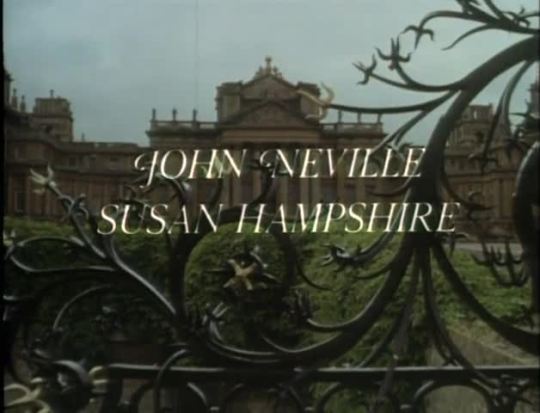

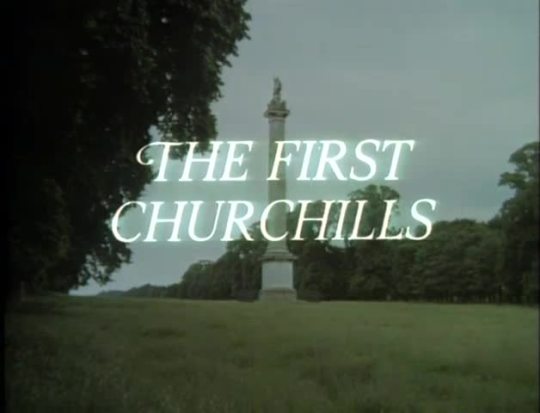
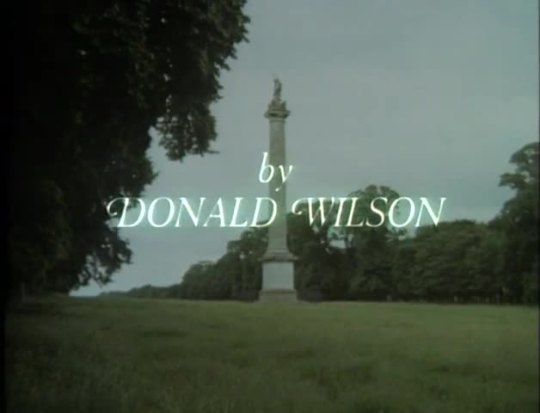










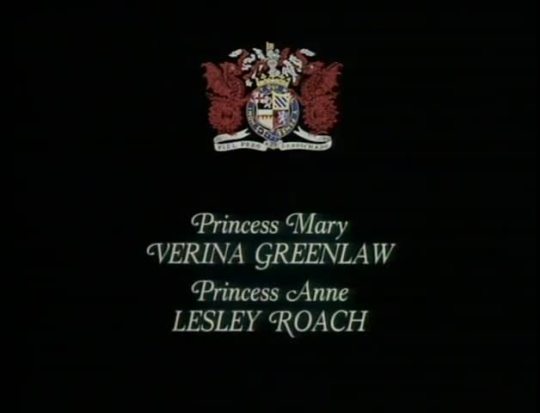


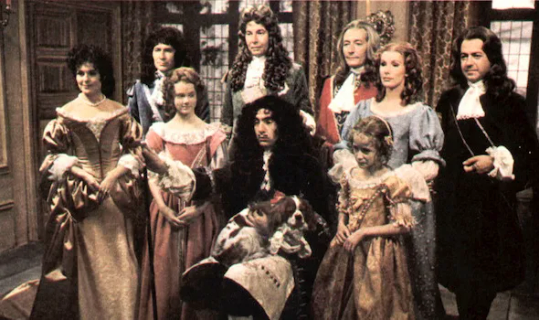
The First Churchills - BBC Two - Septembr 27, 1969 - December 13, 1969
Period Drama (12 Episodes)
Running Time: 60 minutes
Stars:
Susan Hampshire as Sarah Jennings Churchill, Duchess of Marlborough
John Neville as John Churchill, 1st Duke of Marlborough
James Villiers as King Charles II
John Westbrook as King James II
Sheila Gish as Queen Mary, wife to James II
Alan Rowe as King William III
Lisa Daniely as Queen Mary II
Margaret Tyzack as Queen Anne
Roger Mutton as Prince George of Denmark
Robert Robinson as King Louis XIV
John Standing as Sidney Godolphin
Frederick Peisley as Lord Shaftesbury
Job Stewart as Lord Shrewsbury
James Kerry as James, Duke of Monmouth
Richard Pearson as Robert Harley
Moira Redmond as Barbara, Duchess of Cleveland
Richard Warwick as Francis Godolphin
Polly Adams as Henrietta Churchill
Graham Armitage as John Wilmot, Earl of Rochester
Colin Bean as Lord Russell
Consuela Chapman as Duchess of Portsmouth
Michael Culver as Charles Churchill
Andria Lawrence as Nell Gwyn
Michael Lynch as D'Artagnan:
Kay Patrick as Henrietta Wentworth
Arthur Pentelow as Marquess of Carmarthen
Bruce Purchase as Duke of Buckingham
John Ringham as Laurence Hyde, 1st Earl of Rochester
Nicholas Smith as Titus Oates
Michael Attwell as Henry St John
Jill Balcon as Abigail Masham
Freddie Wilson as James Stuart, the Old Pretender
Yvonne Antrobus as Anne Churchill
Robert Mill as Charles Spencer, 3rd Earl of Sunderland
William Job as Adam de Cardonnel
Bernard Taylor as William Cadogan
Francis Wallis as John Churchill, Marquess of Blandford
The First Churchills was the first series telecast by PBS under the title of Masterpiece Theatre from January 10, 1971 - March 28, 1971
#The First Churchills#TV#BBC Two#PBS#Period Drama#1970's#Susan Hampshire#John Neville#James Villiers#John Standing
8 notes
·
View notes
Text
When Arabs Became Palestinians
by Jerold S. Auerbach
Without a history of their own, Palestinians plundered Jewish history to define themselves
May 19, 2022 at 8:45 am | Topics: palestinians, Nakba
Share on

(JNS) With the recent eruption of Palestinian violence on the Temple Mount, followed by the murder of three Israelis from the town of Elad, it is worth reflecting on the history of a people, until recently non-existent, who seem determined to define themselves by killing Jews.
Modern conceptions of “Palestine” date from the mid-19th century when British artist David Roberts followed the trail of the ancient Israelites from Egypt to their “Holy Land.” His lithographs provided stunning vistas of Hebron, Jerusalem, Jericho, Nablus and other ancient Jewish sites. As yet, there were no “Palestinian” locations to include.
Not long afterward, Scottish writer Alexander Keith, identifying the Land of Israel as the “Holy Land,” described Jews as “a people without a country; even as their own land … is a country without a people.” British Lord Shaftesbury cited “the ancient and rightful lords of the soil, the Jews!” Palestinians were not mentioned.
On the eve of World War I, Chaim Weizmann, who decades later would become the first president of Israel, said: “There is a country which is called Palestine, a country without a people, and, on the other hand, there exists the Jewish people, and it has no country.” What else was necessary, he wondered, “than to fit the gem into the ring, to unite this people with this country?”
Although Arabs in small numbers had lived in Palestine for centuries with prosperous elite families concentrated in Jerusalem, there were no signs of an Arab national identity before World War I. Ironically, budding signs of Jewish nationalism—identified as Zionism—were its primary stimulus. But it took time. Shortly before the State of Israel was born, Arab historian Philip Hitti stated: “There is no such thing as Palestine in history, absolutely not.” Without Palestine, there could not be Palestinians.
Not until Israel defeated and humiliated Arab countries in the Six-Day War (June 1967), ending Jordanian control over West Bank Arabs, did a distinctive Palestinian identity begin to emerge. Why was it, wondered author Walid Shoebat of Bethlehem, “that on June 4, 1967, I was a Jordanian and overnight I became a Palestinian.” Even PLO military commander Zuhair Muhsin acknowledged: “There are no differences between Jordanians, Palestinians, Syrians and Lebanese. We are all part of one nation.” The vision of a Palestinian state, he recognized, was merely “a new tool in the continuing battle against Israel.”
Without a history of their own, Palestinians plundered Jewish history to define themselves. The ancient Canaanites were identified as the original “Palestinians.” So, too, were Jebusites, the biblical inhabitants of Jerusalem. Based on these fanciful claims an imaginary “Palestinian” history of 5,000 years was implanted in the Land of Israel.
Palestinians’ identity theft has taken strange turns. They have absurdly equated the nakba(“disaster” or “catastrophe”) of 1948 when Arabs launched—and lost—a war of Jewish extermination with the Holocaust. Indeed, Holocaust denial was the core of the doctoral dissertation of Palestinian Authority leader Mahmoud Abbas. He preposterously claimed that Zionist leaders were “fundamental partners” of the Nazis, jointly responsible for the slaughter of 6 million Jews.
Palestinians have relied upon the model of the Israeli Law of Return to claim that millions of “refugees”—fewer than 30,000 of whom are still alive—should be permitted to return to the land they abandoned in 1947-48 during the Arab war to annihilate Jews. Teenage Arab girls have been taught to equate their plight with that of Holocaust victim Anne Frank.
So it is that a people without a national history until well into the 20th century have attempted to persuade a gullible world audience that Palestinians are the rightful inheritors of Jewish history and land. Ironically, even the holy Koran (which makes frequent mention of Jews but does not mention Palestinians) was interpreted by Muslims more than a millennium ago to affirm that the Land of Israel was given by God to “the children of Israel” as a perpetual covenant. Murdering Jews was not mentioned. But as scholar and novelist Dara Horn aptly titles her new book, People Love Dead Jews.
2 notes
·
View notes
Text
British colonialism has been trying since the last century to intervene in the internal affairs of Palestine and the Arab countries, mindful of the significant geographic and strategic location of these countries, especially Palestine. Colonial powers at the time—notably tsarist Russia, France, and Germany—were intervening in the affairs of Palestine through “minority protection”: Russia particularly did so allegedly for “Orthodox [Russian Orthodox Christians] protection” and France for “Catholic protection,” while the politically and militarily ruling Ottoman Empire claimed to be the protector of Arabs and Muslims. When British colonialists were bent on intervening, they found it necessary to look for a group whom they could “take on the trouble” of protecting (as British colonialism has developed the habit of “going through hell” to do “good,” as it is currently doing by “sacrificing” and “paying high costs” in money, weapons, and troops for the sake of “preserving security and independence” in Indonesia!). This explains how British colonialism—having wearily searched Palestine for a group to protect—singled out “the Jews” and so declared “its protection” of them, using them as a pretext to intervene in the affairs of Palestine. On this basis, the British government had established a British Commission in Jerusalem in 1838, which announced “the protection of Jews in general” as one of its underlying objectives. Lord Shaftesbury [1801–85], whom Zionists regarded as a humanist and idealist, backed Palestine’s colonization by “the progeny of Abraham” while simultaneously strongly opposing for “religious” reasons the liberation of Jews in Britain. Furthermore, many British Tories were supportive of the idea of colonizing Palestine as a bridge to enable them to extend their colonization to the Near East and Arab countries. [. . .] That is how the relationship between Zionism and British colonialism developed.
Yusuf Harun Zilkha, Zionism Against Arabs and Jews
2 notes
·
View notes
Text
Today we started with an early morning breakfast at 7:30am. We had to start walking at 8:30 to arrive at Lords cricket ground by 9:30am for our tour. On our walk through Hyde park we wondered why there was such a big police presence. It wasn’t until sitting in the Lords stand that we realized Joe Biden was landing there in a chopper that we saw fly over the ground. The Lords tour was exceptional. Seeing the home and visitors change room, along with the members long room, and media centre a highlight. Ex student Esther Hampton joined us for the tour. After Lords, we had some lunch before starting the red bus tour of London. We will finish this tour tomorrow. As a team we then walked to Westend after dinner to watch Mrs Doubtfire at the Shaftesbury theatre. It was excellent. All boys seemed to really enjoy it. Tomorrow is our last day in London so we will finish the red bud tour and do some shopping.
5 notes
·
View notes
Text
No traffic circle in the British Empire could be more significant.

A very different Piccadilly back then in 1920.
#Piccadilly Circus#Old London#Lord Shaftesbury#omnibuses#vintage photography#Victorian architecture#monochrome#pedestrians#traffic circle#nostalgia#iconic#archival photo#1920's#UK
43 notes
·
View notes
Text
The first known recorded use of ponies underground in Great Britain was in the Durham coalfield in 1750.
Following the drowning deaths of 26 children when the Huskar Colliery in Silkstone flooded on 4 July 1838, "A report was published in The Times, and the wider British public learned for the first time that women and children worked in the mines.
There was a public outcry, led by politician and reformer Anthony Ashley Cooper, later Lord Shaftesbury," who then introduced the Mines and Collieries Act 1842 to Parliament which barred women, girls and boys under 10 (later amended to 13) from working underground, leading to the widespread use of horses and ponies in mining in England.
At the peak of this practice in 1913, there were 70,000 ponies underground in Britain.
Probably the last colliery horse to work underground in a British coal mine, "Robbie", was retired from Pant y Gasseg, near Pontypool, in May 1999.
4 notes
·
View notes
Text
Court Circular | 11th December 2024
St James’s Palace
The Princess Royal, Patron, Shaftesbury, this morning visited Netteswell Rectory, Manston Road, Harlow, and was received by Mr Vincent Thompson (Deputy Lieutenant of Essex).
Her Royal Highness this afternoon visited Brightlingsea Museum, Dove House, Station Road, Brightlingsea, and was received by His Majesty’s Lord-Lieutenant of Essex (Mrs Jennifer Tolhurst).
The Princess Royal, Colonel-in-Chief, Intelligence Corps, later visited 1 Military Intelligence Battalion at Merville Barracks, Colchester, Essex.
Her Royal Highness, President, Racing Welfare, this evening attended a Carol Concert at Tattersalls, Terrace House, 125 High Street, Newmarket, and was received by His Majesty’s Lord-Lieutenant of Suffolk (Clare, Countess of Euston).
The Princess Royal, President, Racing Welfare, afterwards attended a Dinner at the Jockey Club Rooms, 101 High Street, Newmarket, and was received by the Hon Peter Stanley (Deputy Lieutenant of Suffolk).
9 notes
·
View notes
Text
ABOUT: Charles Braddock

BIRTH NAME Charles Christopher George Cornelly
CHOSEN NAME Charles Braddock.
TITLE Lord (Charles does not use his title).
NICKNAME(S) Charlie (to friends, etc)
AGE Late 30s.
PLACE OF BIRTH Oxford, England.
GENDER Male.
PRONOUNS He/Him.
SEXUAL IDENTITY Bisexual
AFFILIATION(S) British Royal Navy.
RANK Captain.
FACE CLAIM Dan Stevens
HEIGHT 1.83m / 6’.
HAIR Blonde, slight wavy/curly, kept short.
EYE COLOUR Blue.
FANDOM: Age Of Sail.
FATHER Duke Edmund Archibald Isaac Cornelly, Earl Of Shaftesbury.
MOTHER Duchess Charlotte Isabella Elizabeth Cornelly (née Braddock).
SIBLING(S) Earl Edmund Percival Francis Cornelly (older brother)
// NOTE : Charles & every member of his family are created solely by mun and have no relation to any real person or history of the title ‘Earl Of Shaftesbury’ //
Braddock is his mothers maiden name. He chose to use it to honour her.
Charles was always seen as lesser than his older brother by his father as he didn’t stand to inherit anything and therefore his father didn’t see him as being able to bring value to the family.
As soon as he was old enough, Charles left the family home without a word and joined the British Royal Navy. Using his mothers maiden name Braddock to cover his true identity.
VERSES
TURN: WASHINGTON'S SPIES
Instead of joining the British Royal Navy, Charles joined the army and is a part of the war against Washington & the Continental army. Whether or not he stays on that side would depend on each individual interaction. Or whether he were to be recognised by anyone.
0 notes
Text
since verso has a bunch of free books on palestine:
i finally sat down and started reading "Ten Myths About Israel" by Ilan Pappe. (because, i gotta be honest, i really didnt know much of anything about palestine before.) only a few pages in, but with each page im getting more and more furious.
i couldve basically screenshot every page. its only 168 pages long and id recommend everybody to read it themselves, but here are some screens:
1st chapter is about the myth of palestine being an empty land prior

Pappe starts off explaining that yes, indeed, palestine was a place where people lived, with records.
this is then compared to the official statement on the website of the Israeli foreign ministry about the history of Palestine since the 16th century.

straight up erasing facts and history.

palestine was an empty and barren desert. oh but there were farmers there apparently, of no particular origin, farming on lands that didnt belong to them. but there was also a thriving jewish population.
pappe writes, that palestine was a society like all the other arab societes around it during the ottoman period. it did not differ them the eastern mediterranean countries as a whole. the palestinian people were exposed to other cultures as part of the wider ottoman empire. and it started its nationalization process before the arrival of the zionist movement.
not to be confused: the modern concept of a "nation" developed in the 18th century (to summarize this topic super quickly, because the word "nationalism" which is coming up a few times has quite a different connotation nowadays than it did back then. remember: there used to be empires and monarchies. not nation states.)
and this was happening all over the world. pappe writes: "nationalist ideas were imported into the middle east in part by american missionaries, who arrived in the early 19th century both with the wish to proselytize but also with a desire to spread novel notions of self-determination."

2nd chapter is about the myth "the jews were a people without a land"
this one starts off saying that there was a christian interest for jews to return to the holy land.
Thomas Brightman was a 16th century clergyman:



"...was therefore a Christian project of colonization before it became a Jewish one."
16th century. 18th century. 19th century. and yes, as we can see, palestine was acknowledged as a political and geographical place. not as a barren, empty wasteland devoid of people.
this idea of Jews returning to palestine became official imperial policy in britain.

"...power to change the fate of Palestine."
foremost among them was Lord Shaftesbury (1801 - 1885), a british politician who campaigned for a jewish homeland in palestine

shaftesbury recruited his father in law, britains foreign minister and later prime minister, lord palmerston, to the cause. who then appointed william young as the first british vice-consul in jerusalem.
palmerstone wrote:

"...Mohamet Ali or his successor."
yeah.
TL;DR: europe and america, where antisemitism was everywhere, had 3 reasons for wanting jews to go to palestine: to leave europe/america for good, to spread christiniaty, and to be a check against those evil gross arabs. 3 in one!!! no wonder they were all for it.
no wonder western countries are still all for it!!!!!! it was their fucking idea for hundreds of fucking years.
not only is america now supplying weapons for a genocide, not only is europe totally ok with genocide, they created this situation in the first place.
cuz, you know, zionism wouldnt gain any points with their "homeland of the jews" rethoric if jews were able to lead peaceful lives anywhere in the world, you know?
0 notes
Text
Dès l'âge de 15 ans, il a joué dans le théâtre pour jeunes, mais n'a décidé de devenir acteur qu'après quelques années

L'un des rôles les plus notables de Martin Freeman est celui de Tim Canterbury dans la série comique The Office (2001-2003). Pour ce rôle, l'acteur a reçu deux nominations pour des prix prestigieux : le British Comedy Award et le BAFTA TV Award. Il a également joué dans la sitcom Hardware (2003-2004), la série télévisée The Robinsons. Il a joué dans des épisodes de la série "This Life" (1997), "Black's Bookstore" (2000) et dans le film "Love Actually" (2003). En plus de divers rôles comiques, Freeman a également joué plusieurs rôles dramatiques sérieux, le plus important ��tant Lord Shaftesbury dans la mini-série historique de la BBC The Last King (2003).
Il est marié de facto avec l'actrice anglaise Amanda Abbington, qu'il a rencontrée sur le tournage du téléfilm "Only Men" en 2000. Ils ont également joué ensemble dans les films "Récupérer les bouteilles cassées", "Repayer la dette", "Les Robinsons", "Tous ensemble" et la série télévisée "Sherlock". Le couple a eu deux enfants : son fils Joe (né en 2005) et sa fille Grace (née en 2009). Le 22 décembre 2016, on a appris la séparation du couple. "Amanda et moi ne sommes plus ensemble, mais nous sommes de très bons amis. J'aimerai et respecterai toujours Amanda", a déclaré l'acteur.
#cinéma#unfilmcouleur#film#comportementhumaines#actionshumaines#joie#plaisir#aventures#lesdessinsanimés#buxberg
0 notes